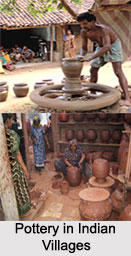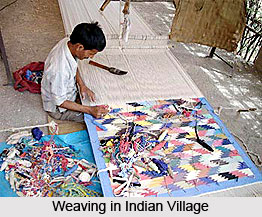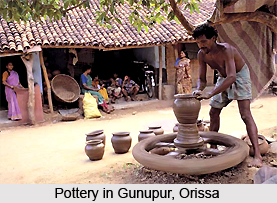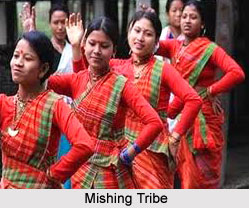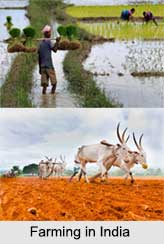 Farming or agriculture in Indian villages has been the principal occupation for the people since the ancient period, as they earn their livelihoods from agriculture. The people cultivate various types of crops throughout the year. The farming systems are extensively contributing Indian agriculture in different ways like subsistence farming, organic farming and industrial farming. India is very reliant on its monsoon cycle for big crop yields.
Farming or agriculture in Indian villages has been the principal occupation for the people since the ancient period, as they earn their livelihoods from agriculture. The people cultivate various types of crops throughout the year. The farming systems are extensively contributing Indian agriculture in different ways like subsistence farming, organic farming and industrial farming. India is very reliant on its monsoon cycle for big crop yields.
Climate and Farming in India
The climatic condition in India is perfectly suitable for agricultural activities and has been one of the major reasons behind people choosing farming as their principal occupation. For India"s ecological location, its parts are experiencing different climates which are affecting each area"s agricultural yield in a different way. Places like Gujarat, Rajasthan, Punjab, and northern Maharashtra all experience the climate of yearly 50 centimetres of rain and each region grows such appropriate crops like "jowar", "bajra" and "peas". West Bengal, parts of Bihar, Uttar Pradesh and Assam are associated with the climate of average yearly 100-200 centimetres of rainfall and they produce crops such as rice, sugarcane, jute and many more. Each type of crop is grown in a different season depending on their compatibility with definite weather. In the contemporary period, the dependency on weather has lessened with the advancement of irrigation technology and different types of crops are being cultivated in India.
Types of Farming in India
People in Indian villages are involved with the agriculture sector in various ways. They occasionally take help of others to do the farming. Other types of farmers in the Indian villages are those who do not have any land of their own. They help others to cultivate crops in their lands. In this way, these people are dependent on agriculture for earning their livelihoods. Following are the different types of Farming in India:
 Dairy Farming: Many Indian farming families are in milk production because it is a stock scheme. Usual milk sales allow them to move from subsistence to earning market-based profits.
Dairy Farming: Many Indian farming families are in milk production because it is a stock scheme. Usual milk sales allow them to move from subsistence to earning market-based profits.
Irrigation Farming: In this method, the crops are grown-up with the aid of irrigation systems, by supplying water to lands through rivers, reservoirs, tanks and wells. The key scheme for these irrigation systems centres on different public investments such as large dams, long canals and other major works that have the need of large amounts of resources.
Commercial Agriculture: In this method of farming, crops are developed in large scale plantations or estates and send to other countries for capital. These systems are regular in populated areas such as Gujarat, Tamil Nadu, Punjab, Haryana and Maharashtra. Examples of crops grown commercially are wheat, cotton, sugarcane and corn. Intensive commercial farming, extensive commercial farming and commercial grain farming are the different types of commercial farming method.
Shifting Cultivation: In this, the land is cultivated for few years, until the crop yields. After that the plot of land is deserted and the ground is cleared by burn methods which allow the land to stock up. Crops like potatoes, rice, corn, buck wheat, small millets, root crops and vegetables are mostly grown in this type of farming. This type of farming is mostly seen in Assam, Meghalaya, Nagaland, Manipur, Tripura, Mizoram, Arunachal Pradesh, Madhya Pradesh, Odisha, and Andhra Pradesh. 85 percent of the whole cultivation in northeast India is by shifting cultivation. Regular shifting from one land to the other has affected the ecology of these areas.
Plantation Farming: It is a capital centred method. For this, advancement in technology and knowledge in well-organized methods of cultivation with the tools including fertilizers, irrigation and transport facilities are required. The tea plantations in Assam and West Bengal, the coffee plantations in Karnataka, Kerala and Tamil Nadu, and the rubber plantations in Kerala and Maharashtra are the different examples of this type of farming.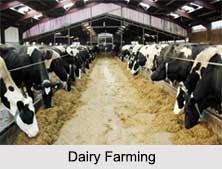
Crop Rotation: It is a type of subsistence farming. In it, if there is an individual working alone or shared farmer working together then the yield is only for their own consumption. Several farmers in India develop the crop rotation system to develop or maintain soil productiveness.
Co-operative Farming: It is a latest farming system in India. It generally excludes pooling of land contrasting with the collective farming where pooling of land is also prepared.
Organic Farming: Another form of farming in Indian villages that provides occupation to the villagers is organic farming. Organic farmers mainly rely on crop rotation, crop residues, animal organics and mechanical cultivation to maintain soil productivity and farmland.
Contract Farming: There are also many people in Indian villages who are involved in contract farming. In contract farming, a person takes care of someone else`s land and cultivates crops in the land. He gets a certain portion of the cultivated crops at the end of the season as his rewards. This is a very common practice in the Indian villages.
In this way, farming in Indian villages is providing occupation to many people. The dependency of Indian villagers on agriculture and the suitable climatic condition has made India the largest producer of milk, cashew nuts, coconut palm tree, tea, ginger, turmeric and black pepper in the world. India is also the second highest producer of farm products in the world. Farming in Indian villages is the backbone of the entire economical structure of India.

